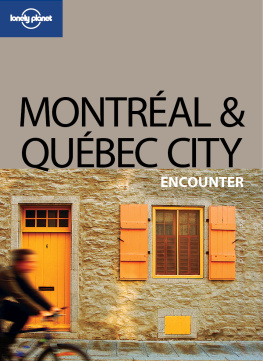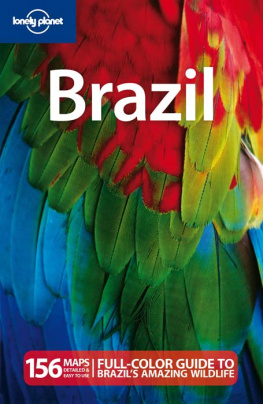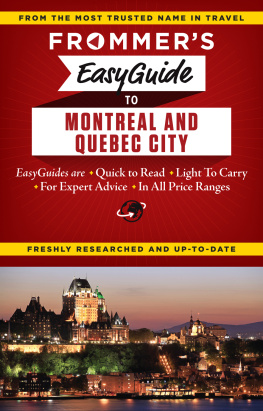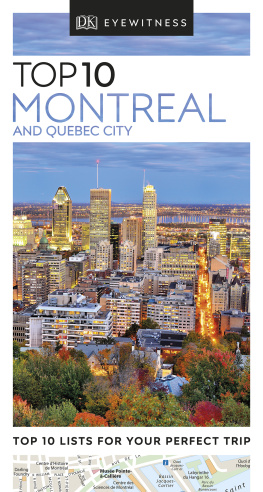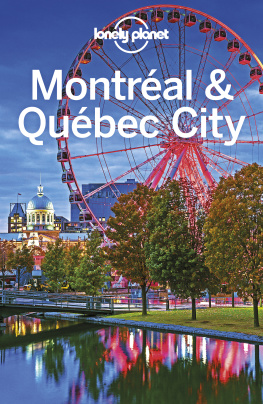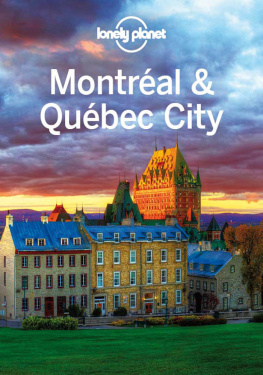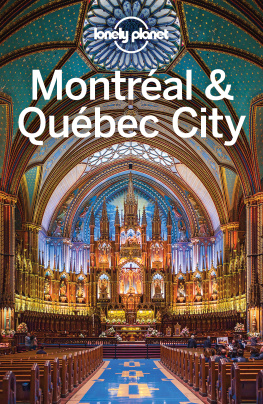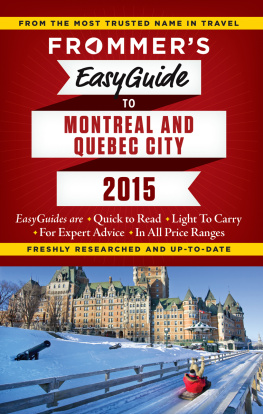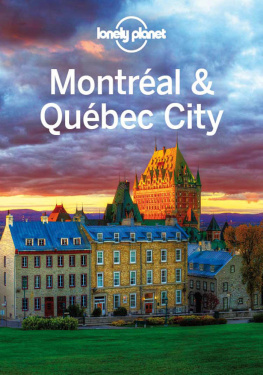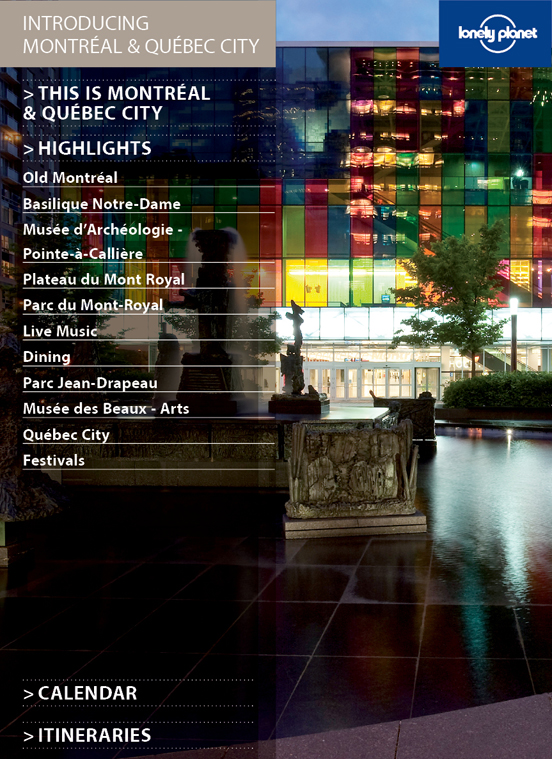This is Montral & Qubec City |
|---|
This is Montral & Qubec City
History and culture collide in two of North Americas most dynamic destinations. Montral and Qubec City embody the spirit for which their province is famed: its joie de vivre, heady French culinary traditions and determination to always follow its own course.
Separatism may no longer be the hot topic it was a decade ago, but no visitor can doubt that these two cities have carved themselves a unique cultural landscape. Gateway to Qubec is Montral, a city whose dual French and English background plus immigrant communities from across the globe has created a fascinating blend of cultures. On a typical night in Montral, music enthusiasts are out listening to French chanson (folk singing), big-band jazz and prog rock, while art lovers mix at openings of the latest European, qubcois and American exhibitions. Cineasts are lining up for a revival of new-wave cinema, or popping in for the latest indie feature.
The dining scene is no less diverse, with new talented young chefs competing for top honors. Youll find French bistros, Jewish delis, Italian trattorias, steakhouses and Cantonese dining rooms, plus fantastic restaurants serving up Thai, Vietnamese, Lebanese, West African and more.
While lacking the cosmopolitan charms of its big brother, Qubec City has obvious appeal. The Old Town is pure eye candy, its laneways sprinkled with 18th-century houses and lovely plazas, while jewel-box churches and the imposing fortress rise above it on the cliffs overlooking the St-Lawrence.
In addition to their urban charms, both cities offer easy access to the outdoors. There are bike lanes crisscrossing Montral, a lush park on the citys iconic mountain, and kayaking along the Canal de Lachine. In Qubec City, you can join the great outdoor migration in the historic Battlefields Park.
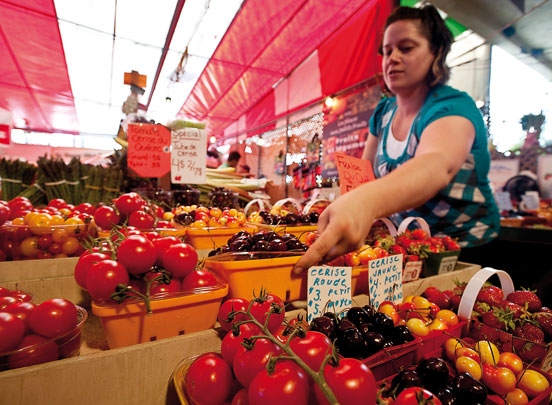
Succulent regional fruits for sale at March Atwater
GUYLAIN DOYLE/LONELY PLANET IMAGES
>1 Old Montral
Wander the cobblestoned streets of Old Europe in the New World
A wander through the cobblestoned streets of this atmospheric quarter takes you back in time, to the earliest days of Frances fledgling colony in the New World. History lurks around every corner, from the photogenic stone buildings along the waterfront to the archaeological crypts beneath the citys former Customs House. Here youll find icons like the March Bonsecours, a sprawling neoclassical building once housing the citys main marketplace, and the grand Htel de Ville (City Hall), where in 1967 French leader Charles de Gaulle fired the dreams of separatists by shouting Vive le Qubec libre! (Long live a free Qubec) to the crowds down below.
The crossroads of rough-and-tumble fur traders of the 1600s later became a landscape of winding, narrow lanes dominated by church steeples. Mark Twain once famously remarked that it was the first time I was ever in a city where I couldnt throw a brick without breaking a church window. Indeed its picture-book chapels and grand basilica are symbols of the once dominant French Catholic influence in the area.
The city for its part has taken great pains to preserve this historic district. For its efforts, it has reaped a grand tourist trade with visitors from all parts coming to soak up a bit of old-world Europe slapped down in North America. In summer, its public plazas and parks take on a carnivalesque atmosphere. Lively Place Jacques-Cartier, with its outdoor bistros and cafes becomes an impromptu stage for the citys most ambitious buskers.
Yet, far from being a static playground for kitsch-loving tourists, Old Montral has its lures for more discerning visitors as well. New boutique hotels have opened their doors in recent years, along with a crop of imaginative restaurants concealed in the districts narrow back lanes some hidden in old stone cellars. High-end art galleries and eclectic boutiques cater to the well-heeled residents whove moved into converted lofts around the area. In the evening, visitors can join the festive cinq--sept (5pm-to-7pm) crowd over happy-hour drinks at stylish haunts before moving the party to underground clubs nearby.
Old Montral is also a gateway to outdoor activities, with everything from picnicking along the waterfront to boat cruises on the St-Lawrence (and outdoor ice-skating for those who come in winter). Cyclists, joggers, in-line skaters and strollers can take a scenic trip along the Canal de Lachine, which goes for nearly 15km west to the edge of the Lac St-Louis. For more on Old Montrals attractions, .
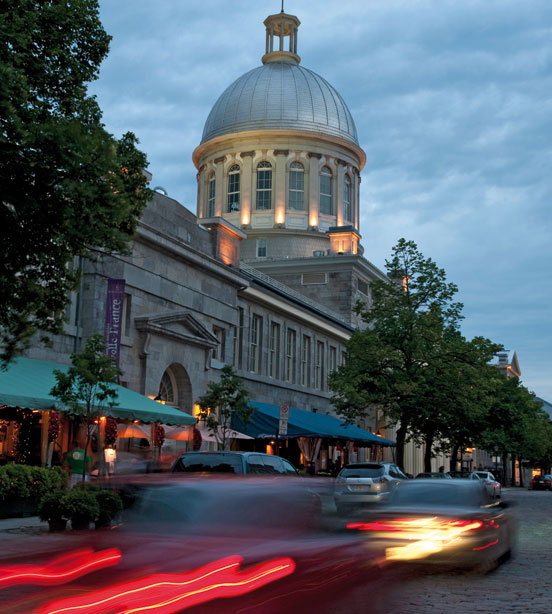
Marche Bonsecours
GUYLAIN DOYLE/LONELY PLANET IMAGES
>2 Basilique Notre-Dame
Count your blessings amid the beauty of Qubecs grandest glise
One of Montrals most enduring symbols, this striking basilica occupies a site rich with three centuries of history. In order to create the neo-Gothic masterpiece, the Sulpicians commissioned James ODonnell, a New York architect and Irish Protestant, to design what would be the largest church north of Mexico. Such was ODonnells dedication to the project that he converted to Catholicism so he could be buried in the basilica.
Opened in 1829, the basilica, which is loosely modeled on Ste-Chapelle in Paris, has a spectacular interior with a forest of ornate wood pillars and carvings made entirely by hand (and constructed without the aid of a single nail). Gilt stars shine from the ceiling vaults and the altar is backlit in electric blues. The massive Casavant organ with 5772 pipes is a thrill to hear, particularly at the famous Christmas concerts; the church bell, the Gros Bourdon, is the largest on the continent. Stained-glass windows depict scenes from Montrals history rather than the usual biblical stories.
The Chapelle du Sacr Coeur (Sacred Heart Chapel) located behind the main hall is nicknamed the Wedding Chapel. Its so popular that couples might have to wait two years to tie the knot. The curious mix of styles emerged after a 1978 fire, when the chapel was rebuilt with a brass altar with abstract-modern motifs. For information on visiting the church, .
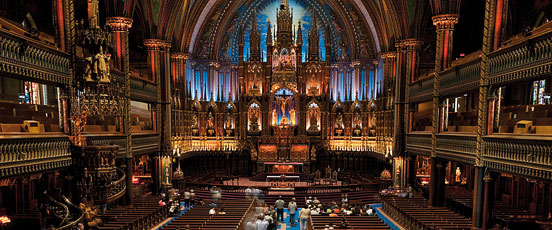
Basilique Notre-Dame
GUYLAIN DOYLE/LONELY PLANET IMAGES
>3 Muse dArchologie Pointe--Callire
Delve into the earliest days of Montral
Built on the spot where European settlers set up their first camp in 1642, the Pointe--Callire Museum of Archaeology and History provides an excellent overview of Montrals beginnings.
The largely subterranean museum houses a wide-ranging collection of artifacts spanning many centuries. Visitors descend in semidarkness to the archaeological crypt holding the remains of the citys ancient sewage and river system and the foundations of its first buildings and first public square. Excavations also reveal Canadas first Catholic cemetery (1634). Interactive exhibits throughout illustrate what life in the colony was like for residents in the 17th and 18th centuries.

